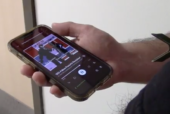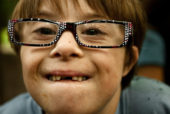Road fatalities on United States highways have spiked this year. More than 20,000 people died in motor vehicle crashes in the first half of this year, the highest six-month total since 2006.
Locally, the city of Los Angeles also saw a spike in traffic collisions, injuries, and deaths in 2021. Traffic fatalities rose to 257 over the last year, according to the news site Crosstown L.A.
“Our research shows that in 2020 and 2021, drivers have engaged in riskier behaviors on the road. That includes speeding, driving under the influence of drugs and alcohol, and not wearing seatbelts,” said Lauren Ballard, a transportation planner with the L.A. Department of Transportation.
In 2015, Mayor Eric Garcetti created the “Vision Zero” program to keep Los Angeles streets safer.
“The plan aims to reduce traffic fatalities down to zero,” said Senior Civil Engineer of LA County Public Works Matthew Dubiel. “The action plan started in August of 2020. We’re working now to implement infrastructure and educational programs to enhance traffic safety.”
The plan aimed to achieve its goals through, among other things, upgrades to existing traffic signals, protected bicycle lanes, and upgraded crosswalks with flashing beacons.
Nonprofits and advocacy organizations are pushing for similar measures. Damian Kevitt is the Executive Director of “Streets Are For Everyone”, a nonprofit group aiming to improve roadway safety for pedestrians and bicyclists. He says that nearly 6,500 pedestrians are killed by motor vehicles each year, and fixing this crisis must start now.
“We have a tremendous number of roads that were built so that they are dangerous roads. They are dangerous by design,” said Kevitt. “It takes engineering, reprogramming a traffic light to make an intersection safer. Sometimes it takes breaking concrete, redesigning an entire street, and that is not a cheap venture.”
This story was reported and produced by Kimmy Chacon, Jonathan Giovanazzi and Kali Raglin.

 Tweet this Video
Tweet this Video Share on Facebook
Share on Facebook Share via E-mail
Share via E-mail

